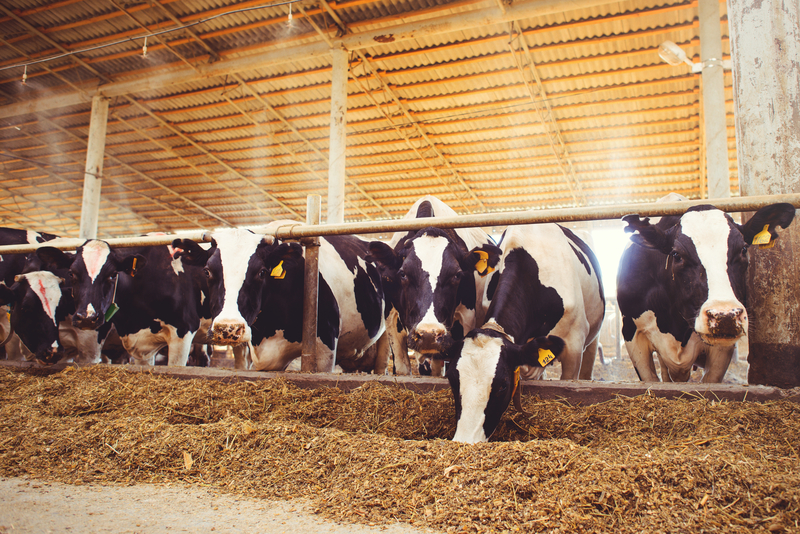Infectious diseases are a major cause for animal suffering and production losses in livestock and at the same time, often being zoonotic, represent a serious hazard for food safety. Combating infectious diseases of livestock is, therefore, a top priority on the veterinary and public health agenda. Mass use of antibiotics, antiparasitic drugs and vaccines have been employed, but this practice alone was unable to provide solutions to many of the multifactorial disease complexes. The increasing threat of multidrug resistance caused by inappropriate employment of antibiotics is a serious concern. Although vaccines are a great success story they are lacking efficacy against difficult pathogens and against certain disease complexes caused by multiple pathogens typically found in the field. In fact, major problems are antigenic variability of the pathogens and the multifactorial nature of the diseases being caused by complex combinations of pathogens, environmental and husbandry factors.
Why can immunology contribute to solving these problems?
The mammalian immune system has evolved to control pathogenic infections and in most cases is able to perform its tasks with remarkable efficacy. The immense variety of pathogens has driven the evolution of a very complex immune system, which nevertheless follows relatively simple principles. The immune system needs to recognize invading pathogens and trigger an immediate response limiting the further spread of the pathogen. This is initiated by receptors recognizing structures specific to different classes of pathogens. This “innate immune response” can be an inflammatory or antiviral response. An important feature is that it needs to be controlled to avoid the excessive collateral damage of host tissues. Pathogens reaching a certain threshold of infection will also stimulate “adaptive immune responses” by T- and B-lymphocytes, responsible for cellular and humoral responses, respectively. Their receptors are highly specific for a given pathogen and are able to recognize virtually any structure. The price for this enormous diversity in antigen recognition is that lymphocytes expressing these specific receptors need to be amplified before being effective against the invading pathogen, and this process takes several days. With these fundamentals, there are principally two strategies on how the immune system can be made more protective. First, the innate immune system can be boosted to a higher level for early pathogen control. Second, the adaptive immune system is targeted, which is typically achieved with vaccines. So, the main argument to target the immune system for improving animal health is that nature itself is demonstrating this to be most successful.
Stimulating the innate arms of the immune system
The innate immune system can protect the body from infection, reduce the ability of a pathogen to proliferate and spread in the host, and importantly trigger adaptive immune responses. With respect to the latter, it will direct the type of adaptive immune response, for instance, promote the response required against extracellular pathogens colonizing mucosal surfaces or alternatively promote responses against intracellular pathogens. For these reasons, there is a great potential in stimulating the innate immune response.
The crisis of translating basic immunological research into new therapeutics and vaccines
Basic research has mostly used the mouse model to discover fascinating details of the functioning of the mammalian immune system. But the amount of new prophylactic and therapeutic solutions to human and animal health has been disappointing. In fact, a deep canyon between basic research and clinical solutions has established. There are many reasons for this. While the murine model is excellent to discover and explain basic principles of the mammalian immune system, details in the distribution and functioning of certain immune cells and immunological receptors and their ligands can differ. These differences have been driven by evolution as different species habitat a different environment with for instance different food and pathogen exposure. Also, major differences in the commensal microbiome colonizing mucosal surfaces are noted. This is known to have an important impact on the immune system. In addition, major anatomical differences, for example in the skin, the mucosa, and the gastrointestinal tract, have a strong influence on the functioning of the immune system. A further drawback of murine models can be the employment of inbred mice in a highly controlled environment, not reflecting real life. As a consequence, extrapolations from the murine model to other species can be wrong. A final point amongst the many that could be made is the limitations of many models for infectious diseases simply caused by the fact of evolution-driven pathogen-host interactions resulted in fine-tuned adaptation processes at the molecular and cellular levels. In rodent animal models this can often not be recapitulated resulting in misleading results and failure of translational research.
Bridging the gap
Veterinary immunology focuses on the immune system of the target species of particular pathogens and is dedicated to understanding the functioning of immunity in pigs, cattle, small ruminants, chicken and other relevant species. This research has demonstrated important species-specific differences in the immune system. In our laboratory, we are focussing on mononuclear phagocytes including dendritic cells of pigs, dogs and cattle. These represent central cells in the innate immune response and are also absolutely essential to induce adaptive immune responses. They, therefore, represent excellent target cells for immunostimulation or immunomodulation. With the tools available we are developing new vaccine adjuvants designed to induce specific types of immune responses in pigs to improve antibody and T-lymphocyte responses, both systemically and at mucosal surfaces. In addition to this application, our research contributes to understand the mechanisms of how pathogens induce disease and evade the host immune response. Finally, the specific knowledge and tools are applied to develop possibilities of enhancing the resistance of animals against infections by stimulating the innate immune system. Of particular importance is the protection of mucosal surfaces, which represent the entry port for many pathogens. Current and future research is thus addressing how enhanced resistance of mucosal surfaces can be achieved without using antibiotics but instead promoting natural defence mechanisms − a clearly sustainable approach compatible with the ideas of the One Health Concept.
Artur Summerfield
Professor of Veterinary Immunology
Institute of Virology and Immunology, University of Bern
Tel: +41 58 46 99 377
artur.summerfield@vetsuisse.unibe.ch











